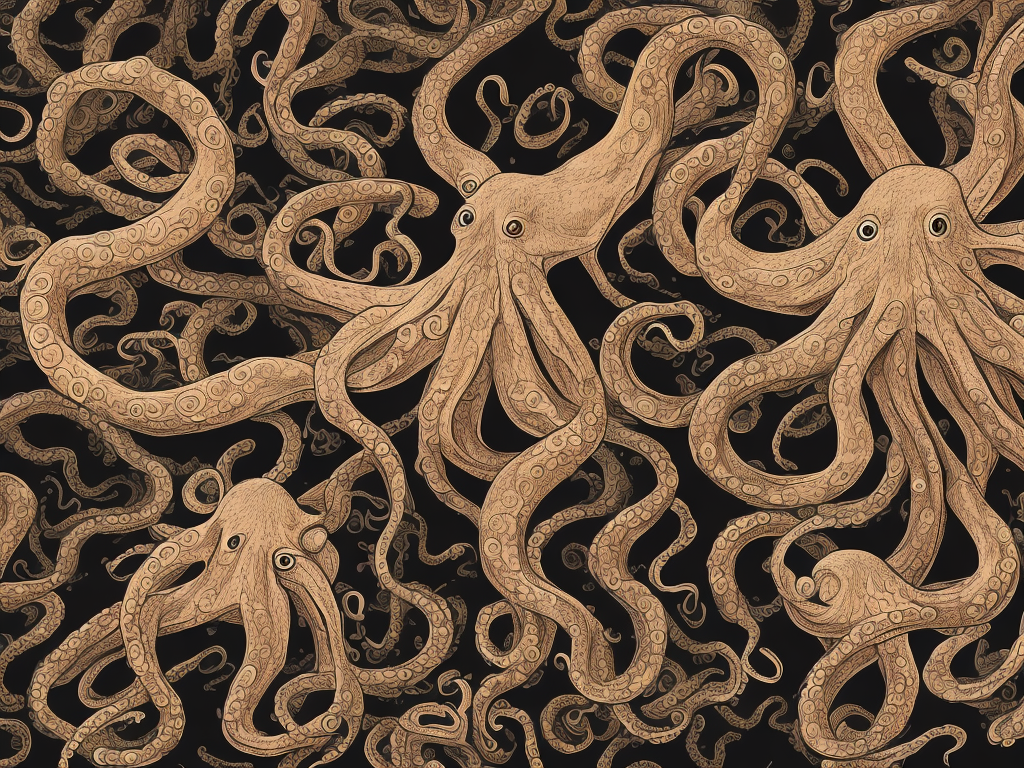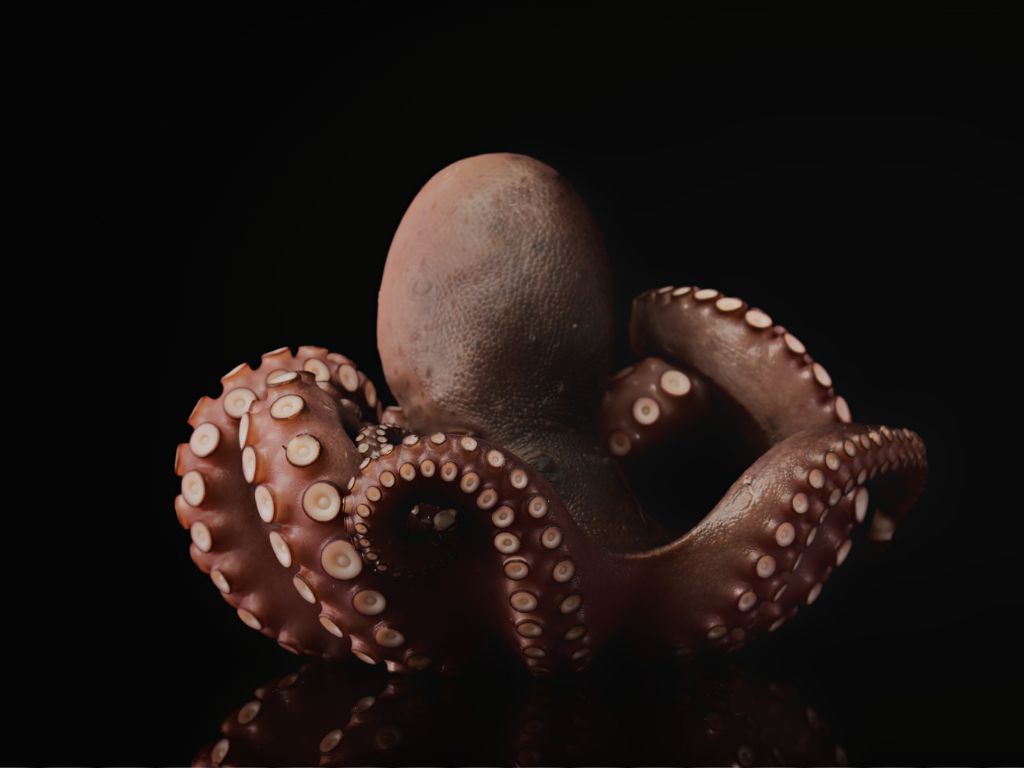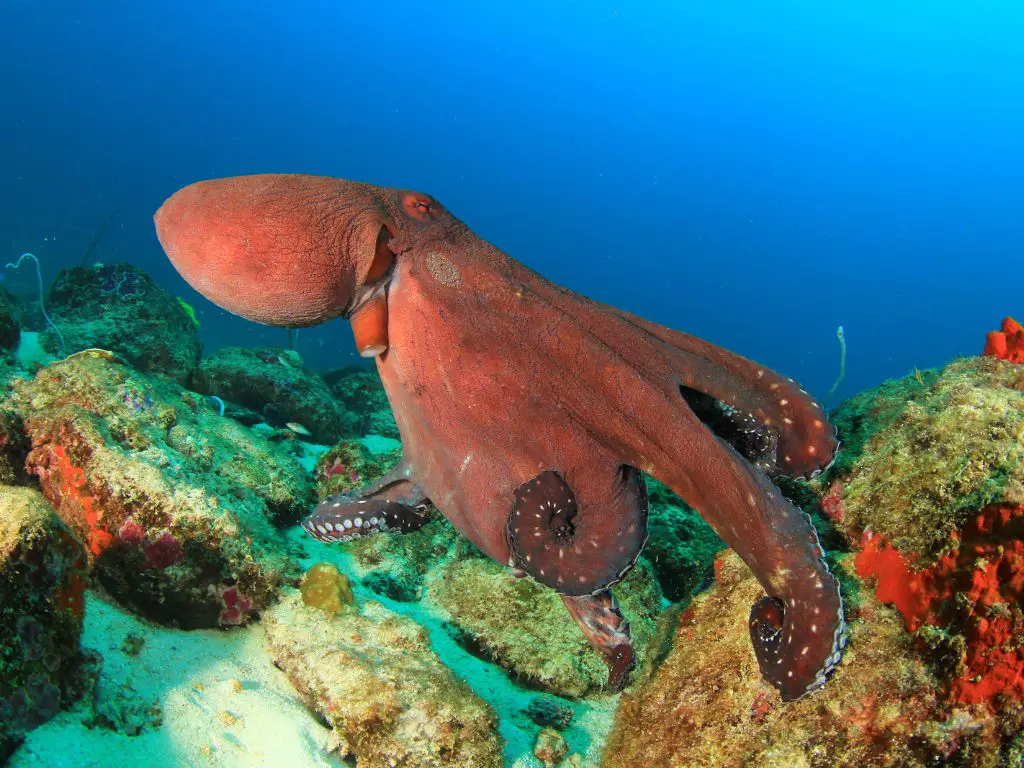How Many Hearts Does An Octopus Have? Unraveling A Cephalopod Secret
Have you ever stopped to wonder about the incredible inner workings of some of our planet's most mysterious ocean dwellers? So, it's really quite amazing to think about what makes them tick. For instance, many people often ask, "how many hearts does an octopus have?" It's a question that, you know, really sparks curiosity about these fascinating creatures.
These eight-armed wonders are, in fact, iconic for their unique appearance and, quite frankly, their surprising intelligence. We often marvel at their ability to change color, solve puzzles, and even use tools, but their internal biology is just as remarkable. It turns out that an octopus has a circulatory system that's a bit different from what we might expect, which is really interesting to consider.
Today, we're going to take a closer look at this particular question and explore what makes an octopus's heart system so special. We'll find out exactly how many hearts they possess and, actually, why this unique arrangement is so important for their survival in the deep blue sea. As a matter of fact, it's a story that truly highlights the incredible diversity of life on Earth.
- Space City Home Network
- Business Class Vs First Class
- Nice And Slow Lyrics
- Point Of View Skin Care
- Wasmo Somali Chanel
Table of Contents
- A Trio of Tickers: The Octopus's Unique Circulatory System
- More Than Just Hearts: Other Amazing Octopus Facts
- Expert Insights on Octopus Biology
- Frequently Asked Questions About Octopus Hearts
- Conclusion
A Trio of Tickers: The Octopus's Unique Circulatory System
When we talk about how many hearts does an octopus have, the answer, as of November 2023, is actually three. This is a truly distinctive feature that sets them apart from many other creatures in the ocean, and it's quite essential for their way of life. These three hearts each play a very specific and vital role in keeping these amazing animals alive and thriving.
It's not just a random number, you know. This particular setup is a consequence of their specialized biology and the way their blood carries oxygen. Two of these hearts are quite specialized, and the third one handles a much broader job. So, in some respects, it's a highly efficient system tailored to their unique needs.
The presence of three hearts, it seems, is a really fascinating adaptation. It helps them manage their blood flow and oxygen delivery in a very particular way. This design, arguably, allows them to be the agile and clever hunters we know them to be in their watery homes.
- How To Remove Acrylic Nails
- Mikafans Leaks
- What Happened To Jessica Tarlov
- Taper Fade Black Men
- How To See Deleted Sms
The Systemic Heart: Powering the Body
One of the three hearts is what we call the systemic heart, and this one has a truly big job. Basically, its main purpose is to pump oxygenated blood all around the octopus's entire body. This includes, you know, all the muscles, organs, and tissues that need that vital oxygen to function properly.
This systemic heart acts as the primary circulatory pump, which means it's the main engine driving blood flow through the octopus's system. It's really quite central to their overall health and activity levels. Without it, the rest of the body simply wouldn't get the nourishment it needs.
So, you might say it's the heart that keeps everything moving, ensuring that every part of the octopus gets its share of life-giving blood. It's a pretty crucial component, actually, making sure oxygen reaches every nook and cranny.
The Branchial Hearts: Gill Guardians
Then, there are the other two hearts, which are known as the branchial hearts. These are, in a way, like dedicated pumps for a very specific task. Their job is to move blood directly to the gills, where it can pick up oxygen from the surrounding water.
These two peripheral hearts, as they're sometimes called, work hard to push blood through the delicate structures of the gills. This is where the magic of respiration happens, you know, where oxygen is absorbed and carbon dioxide is released. It's a vital exchange that allows the octopus to breathe underwater.
Having two separate hearts just for the gills is, arguably, a very efficient way to ensure that the blood gets fully oxygenated before it goes back to the systemic heart. This setup means the octopus can maintain a good oxygen supply, even when it's very active or in environments with lower oxygen levels. It's a rather clever design, if you think about it.
Why Three Hearts? The Blue Blood Connection
The fact that octopuses have three hearts is, interestingly enough, partly a consequence of their blue blood. Yes, you heard that right – their blood isn't red like ours; it's blue! This is due to a copper-based protein called hemocyanin, which carries oxygen in their bloodstream instead of the iron-based hemoglobin we have. So, it's a pretty big difference.
Hemocyanin is, in some respects, less efficient at carrying oxygen than hemoglobin, especially in colder, low-oxygen waters where octopuses often live. This means that their circulatory system needs to work harder to get enough oxygen to their tissues. The three hearts, therefore, help to compensate for this.
The two branchial hearts, you see, help to boost the blood pressure as blood moves through the gills, ensuring maximum oxygen uptake. Then, the systemic heart can effectively distribute this oxygenated, albeit less efficiently carried, blood throughout the body. It's actually a very coordinated effort.
This unique blue blood and the need for a robust circulatory system are, in fact, key reasons why the octopus has evolved to have not one, not two, but three hearts. It's a feature that is both fascinating and, quite frankly, absolutely essential to their survival in diverse marine environments. Learn more about marine biology on our site, for instance.
More Than Just Hearts: Other Amazing Octopus Facts
Beyond their unique heart system, octopuses are, like, truly incredible creatures with a whole host of other amazing biological features. They are smart, they use tools, and they show a level of intelligence that continually surprises researchers. They are, in a way, masters of their environment.
Their physical structure is also quite remarkable, allowing them to squeeze through tiny spaces and camouflage themselves almost instantly. It's honestly pretty mind-blowing to watch them change color and texture. They are, you know, just incredibly adaptable.
These animals really stand out in the animal kingdom for their combination of brains and brawn, or rather, brains and arms. They offer so much to learn about, actually, from their hunting strategies to their reproductive cycles. They're just absolutely fascinating creatures, truly.
Nine Brains and Eight Arms
If you thought three hearts were impressive, get this: octopuses also have nine brains! Yes, you heard that right. While they have one central brain in their head, each of their eight tentacles contains its own mini-brain, or ganglion, that can operate somewhat independently. This allows their arms to react and move even without direct instructions from the main brain, which is quite something.
And, of course, they are iconic for their eight arms, not tentacles, which are covered in suckers. These arms are incredibly strong and flexible, capable of manipulating objects, sensing their surroundings, and even tasting. They are, arguably, some of the most versatile appendages in the animal world.
This distributed intelligence, with brains in each arm, allows for incredibly complex and coordinated movements. It means they can, like, multitask in a way that many other animals simply cannot. It's a pretty amazing example of decentralized control, you know.
Intelligence and Survival
Octopuses are, truly, among the smartest invertebrates on Earth. They are known to use tools, for example, like carrying coconut shells for shelter, which is really quite ingenious. They can also solve puzzles, navigate mazes, and even learn through observation, which is pretty advanced behavior.
This high level of intelligence is, in fact, crucial for their survival. It helps them find food, escape predators, and adapt to changing environments. Their ability to learn and adapt makes them incredibly resilient creatures, truly masters of disguise and strategy.
However, their life cycle is, in some respects, quite poignant. Many species of octopuses die shortly after mating and laying their eggs, a phenomenon known as semelparity. This means they put all their energy into reproduction, making their brief lives incredibly intense and, you know, rather purposeful.
Expert Insights on Octopus Biology
The study of these amazing creatures continues to reveal new wonders. Kirt Onthank, an octopus biologist, has contributed to our understanding of their unique biology, confirming details about their three hearts and their intricate circulatory system. His work, like that of many other scientists, helps us piece together the puzzle of how these animals thrive.
Researchers often point out that the octopus's entire design, from its multiple hearts and brains to its incredible camouflage abilities, is a testament to evolution's ingenuity. It's a system that, you know, has been finely tuned over millions of years to perfectly suit their niche in the ocean. This ongoing research is, actually, very important for conservation efforts and for simply appreciating the natural world.
Understanding the specifics of how many hearts an octopus has, and why, helps us appreciate the complexity of marine life. It encourages us to look beyond the surface and truly delve into the amazing adaptations that allow creatures to flourish in diverse habitats. It's a pretty compelling area of study, frankly.
Frequently Asked Questions About Octopus Hearts
People often have many questions about octopuses, especially about their unique biology. So, here are some common queries that often come up when discussing these fascinating cephalopods, you know, based on what people typically ask.
Why do octopuses have blue blood?
Octopuses have blue blood because it contains a copper-based protein called hemocyanin, which carries oxygen. Unlike our red blood, which uses iron-based hemoglobin, hemocyanin gives their blood a distinct bluish tint when oxygenated. This is, in fact, a common trait among many invertebrates.
Where are an octopus's hearts located?
All three of an octopus's hearts are located within the animal's head, which is, you know, pretty close to their central brain. The two branchial hearts are positioned near the gills, and the systemic heart is also in the head region, serving as the main pump for the body. So, they're all grouped together, actually.
Are octopuses smart?
Yes, octopuses are considered very smart creatures. They show remarkable intelligence, including problem-solving skills, tool use, and the ability to learn. Their nine brains, one central and eight in their arms, contribute to their complex cognitive abilities. They are, arguably, among the most intelligent invertebrates.
Conclusion
So, when you next ponder how many hearts does an octopus have, you'll know the answer is three. This trio of hearts, comprising one systemic heart and two branchial hearts, is a vital part of their unique biology, especially given their blue, copper-based blood. This system, you know, allows them to thrive in various ocean environments.
Their multiple hearts are just one piece of the puzzle that makes octopuses such truly extraordinary creatures, alongside their nine brains, eight intelligent arms, and incredible capacity for learning. They are, quite frankly, a testament to the diverse and inventive ways life adapts on our planet. We really have so much more to discover about them.
We encourage you to keep exploring the wonders of the ocean and learn more about these amazing animals. Perhaps you'll even be inspired to dive deeper into marine science yourself! To discover more fascinating marine facts, check out this page for instance, it's really worth a look. For further reading, you might want to explore reputable marine biology sites like the Smithsonian Ocean website, which offers even more insights into these incredible beings.
- Lagu Waiting For You
- What Does Wap Mean
- How Long Does It Take For Eyelashes To Grow Back
- Korean Language For I Love You
- Michael B Jordan Girlfriend

How Many Hearts Does An Octopus Have?

How Many Hearts Does the Octopus Have? The Surprising Answer - SciQuest

How Many Hearts Does the Octopus Have? The Surprising Answer - SciQuest